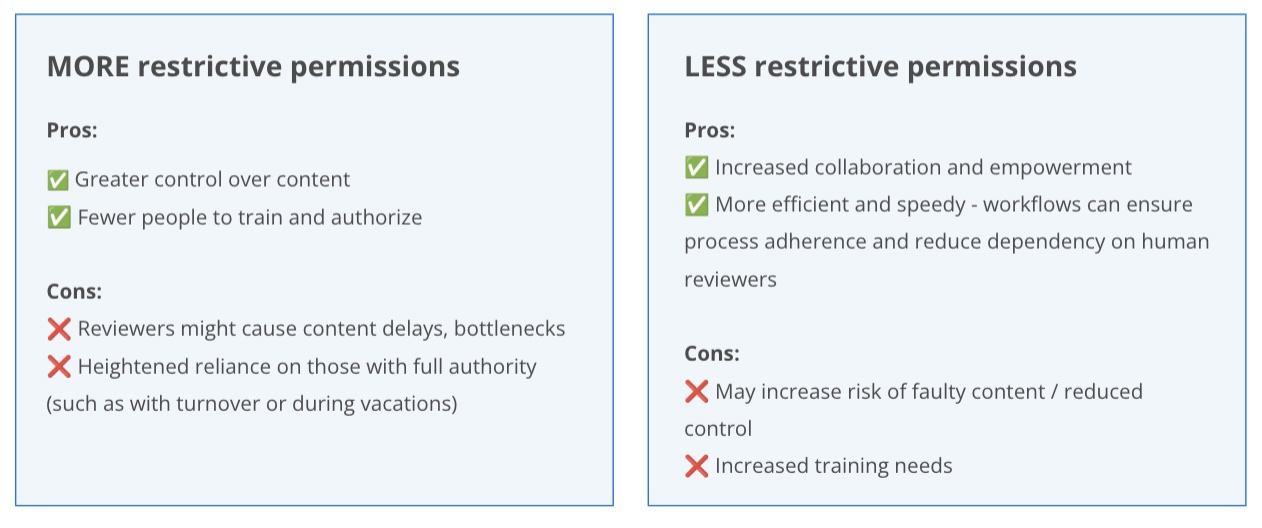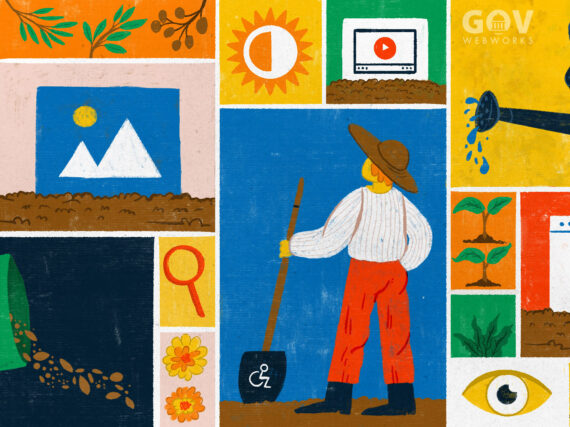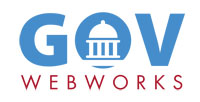Drupal Client Meetup: July 23, 2025
Sarah Crossman: We’re excited to have you all here. Today’s session is led by members of the GovWebworks team with project manager Jim Lochran and user experience designer Brett Kana as our main facilitators. We often hear that while new site launches go smoothly, content can spiral over time—becoming cluttered, inconsistent, or hard to manage. That’s why today we’re focusing on content governance: how to maintain clarity, structure, and control as your site evolves.
We often hear that while new site launches go smoothly, content can spiral over time—becoming cluttered, inconsistent, or hard to manage. That’s why today we’re focusing on content governance: how to maintain clarity, structure, and control as your site evolves.
This session is designed for our content management clients—especially those already using Drupal or planning new implementations. Whether you’re an administrator, content creator, strategist, or somewhere in between, you likely play a role in keeping your agency’s site running smoothly. Our shared goal is to ensure these sites remain long-lasting, maintainable communication tools.
We’ll cover:
- What is content governance
- Sample tone and style guide
- Drupal AI module demo
- Permissions and publishing models
- Common questions and practical tactics
- Three pillars of strong content governance
With that, I’ll hand it over to Brett to get us started.
1. What is content governance?
Brett Kana: Thanks, Sarah. Before diving into strategies, let’s define what we mean by content governance and why it matters.
Content governance is the system of roles, policies, and processes that ensures your content is:
- Consistent
- Up to date
- Aligned with organizational goals
It defines who creates content, how it’s reviewed, how often it’s updated, and what standards are followed in tone, structure, and formatting.
Governance isn’t just workflow or content strategy—though it overlaps with both. Strategy sets direction; governance is how you carry it out over time.
Why governance matters
From a UX perspective, governance supports:
- Trust and credibility: Outdated or inaccurate content undermines user confidence.
- Clarity and consistency: Consistent formatting and structure reduce cognitive load.
- Navigation and findability: Governance helps prevent content sprawl and confusing menus.
- Accessibility and inclusion: Ensures readability, structure, and usability for all users.
Users might not notice governance in action, but they feel the difference. It may not “look” like design—but it protects and extends good design.

2. Tone and style guide
Brett Kana: A great starting point for governance is a tone and style guide—a shared reference that outlines expectations for content creation.
This guide typically includes:
- Tone of voice
- Reading level
- Grammar and spelling rules
- Image and media usage
- Page structure and layout conventions
- Component usage best practices

We developed a guide like this for Missouri’s Department of Health and Senior Services. It combines quick-reference checklists with deeper guidance and examples to help contributors write clearly, accessibly, and consistently.
Get an Abbreviated Content Quality Checklist.
Without this type of guide, it’s nearly impossible to maintain uniformity across contributors. If you don’t have one, it’s not too late—we can help tailor one to your agency’s needs.
Survey highlights
Thank you to everyone who completed our pre-event survey. The challenges you raised—such as inconsistent content, staff turnover, and managing large teams—are exactly what governance practices are meant to solve.
Why a tone and style guide matters
A style guide helps with:
- Training and onboarding: Especially valuable for distributed teams.
- Objective feedback: Avoids subjective critiques by referencing shared standards.
- Scalability: It’s a living document that can evolve with your tools and needs.
To show how this guidance can be applied in practice, Jim will walk us through a Drupal demo.
3. Drupal AI Module demo
Jim Lochran: We’re showing how tone and style guidance can be embedded directly into Drupal using AI tools.
When managing content for multiple audiences—like legal professionals, the public, or the media—tone matters. Drupal’s AI module (powered by OpenAI) helps editors adjust content in real time.
Key features:
- Readability check: The AI assesses reading level (e.g., high school vs. college) and suggests ways to simplify content, like breaking up long paragraphs or using bullet points.
- Tone adjustment: Editors can select a desired tone (e.g., “clear and reassuring” or “professional and concise”), and the AI will revise content accordingly.
- Example: “Navigating the legal landscape can be overwhelming” becomes “Navigating the legal landscape doesn’t have to be overwhelming.”
The module is stable and widely applicable, and helps small teams improve efficiency while maintaining consistency.
4. Permissions and publishing models
Sarah Crossman: Let’s shift gears and talk about how permissions affect governance. Jim, can you walk us through a few publishing models?
Jim Lochran: Permissions are often an afterthought, but they should be planned early and reflect how your organization operates.
Model A: Restrictive Publishing
A small, trained team handles all updates.
- Pros: Strong quality control and brand consistency.
- Cons: Bottlenecks, slower updates, heavy reliance on key individuals.
- Tip: AI tools can help streamline this model by assisting with content creation and moderation.
Model B: Open Publishing
More staff are empowered to create and publish content.
- Pros: Faster updates, scalable, content is closer to the subject matter.
- Cons: Requires training and governance to avoid inconsistency.
Workflows and AI-assisted reviews help balance speed with quality in both models.
Tools to support governance
- Taxonomies: Used to control content by topic or region.
- Example: MoDOT uses a regional taxonomy to filter and manage content.
- Group Module: Segments content contributors by division.
- Example: Mississippi DOT uses Groups to manage five distinct editorial areas within one site.
Poll results
Most participants reported using a more open publishing model. Just remember: more contributors can increase inconsistency, so clear guidelines and review workflows are essential.
5. Questions and practical tactics
Republishing content
Robbie (Audience): Can you republish a page without changing the content?
Jim Lochran: Yes, Drupal will update the “last changed” date, but search engines won’t treat it as new unless the content actually changes. Even a single word can be enough to trigger a re-crawl.
Governing use of imagery
Brett Kana: Images are content and should be governed just like text.
Best practices include:
- Brand consistency
- Relevance to the message
- Accessibility (alt text, no embedded text)
- Performance optimization (especially for mobile)
Jim Lochran: Large, high-res images can slow your site—find the right balance between quality and performance.
Broken link tracking
Jim Lochran: Drupal has tools like the Broken Links module, which helps identify broken links in your site. It integrates into admin dashboards for easy monitoring. You can build custom admin dashboards using Layout Builder and embed views like Broken Links, reports, and more—all using the same tools as the public site.
Style guide challenges
Jen (Audience): We have a tone and style guide but still struggle with consistency.
Sarah Crossman: That’s common. Even with a guide, people may forget to use it. That’s why tools like the Drupal AI module are helpful—they bring the guidance directly into the editing experience.
6. Three Pillars of Strong Content Governance
Sarah Crossman: To close, we want to highlight the three pillars that support effective site governance:
- Knowledge: Share awareness of best practices, shared standards, and training across your team.
- Process: Define clear rules and workflows to guide how content gets created, reviewed, and published.
- Technology: Use Drupal modules, permissions models, and AI integrations that enforce consistency and scalability.
Together, these pillars form the foundation of a well-governed, sustainable website.
Thanks for joining us!
Learn more
- Contact GovWebworks to schedule a demo
- Drupal Meetups – Effective Site Search: A guide to enhancing Drupal site search for better content findability
- Drupal Development topics on the GovWebworks blog
- Get an Abbreviated Content Quality Checklist








